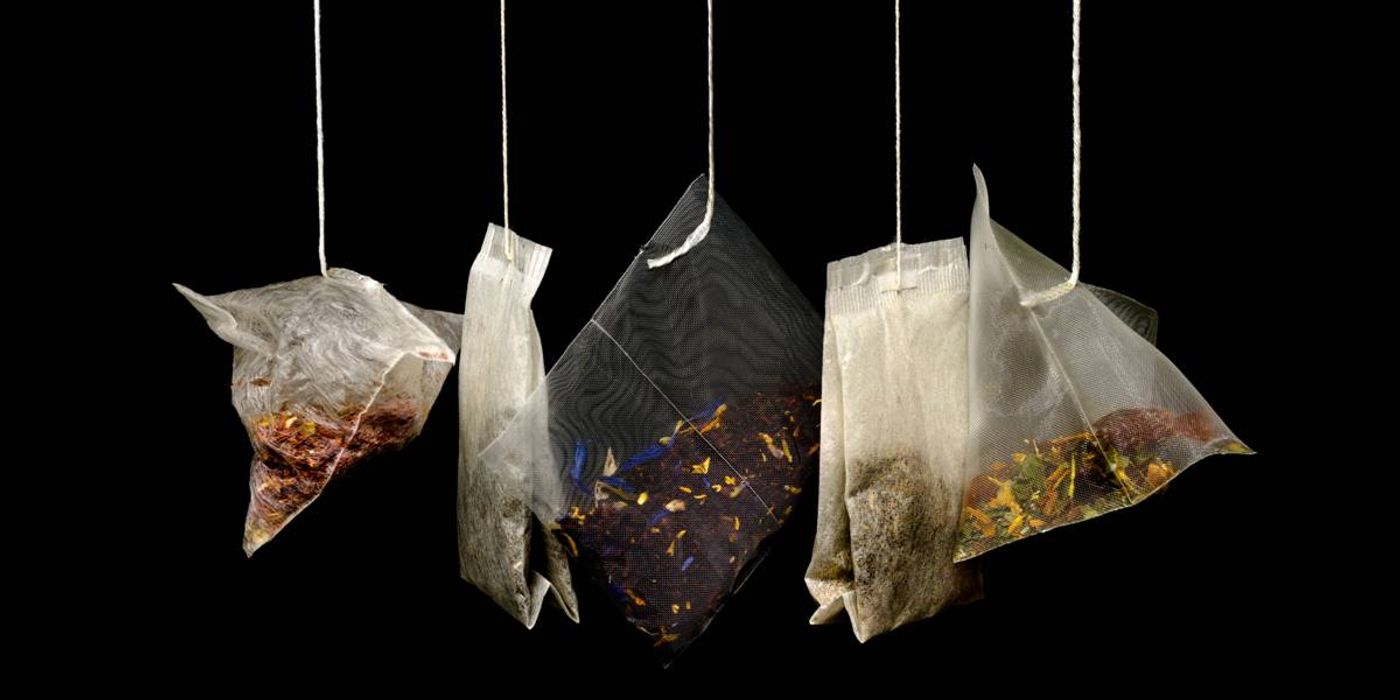Who'd Have Known: Plastic Teabags Could Ruin Your Zen (and Health, Too)
It's no news that our world is entrenched in plastics. What's more unnerving, recent scientific studies found that the tiny pieces of plastics waste managed to find their way into our bodies through ingestion and inhalation. Now, evidence suggest that these omnipresent substances could also ruin your zenful morning beverage.
According to the latest research conducted by a team of chemical engineers at McGill University in Montreal, Canada, plastic teabags can release up to billions of tiny plastics particles into a cup of tea under a common brewing process.
The discovery of microplastics particles in salt products back in 2017 causes a wave of grave concerns over plastics contamination of food sources. Micron-sized particles were found in seventeen brands of salt, which originate from eight different countries.
Earlier this year, another study revealed that the average human could consume between 39,000 and 52,000 pieces of microplastic particles per year. If the amount of inhaled microplastic is added to the estimation, that number could be over 74,000.
In the recently reported study, the team of Canadian researchers, led by chemical engineering professor Nathalie Tufenkji, stumbled upon the idea of testing plastic teabags out of pure curiosity.
The four brands tea products in their test have packages made of either nylon or polyethylene terephthalate (PET). Regardless of the type of material, a commonly used 95-degree celsius steeping process can easily add as much as 11.6 billion micrometer-scaled and 3.1 billion nanometer-scaled particles to a cup of tea.
They also examined the plastic materials of the teabags under scanning electron microscopes (SEM) and compared their appearance before and after the steeping process. SEM images revealed a rougher surface of the fibers post-steeping, and also fractures and dents under higher magnification.
To confirm that the plastic particles came solely from the packages but not the tea itself, they also tested tea leaves alone or empty tea bags in the same steeping process.
To assess the toxicity of these micro/nano-sized plastic particles, the researchers dosed Daphnia Magna — a tiny aquatic creature also known as water fleas — with different concentrations of leachate from the teabags. A large portion of the test insects showed (through their transparent bodies) a belly full of particles, and some of them exhibited anatomical abnormalities that resulted from developmental defects.
It remains to be seen if more research on a similar topic may follow suit, and if regulatory bodies such as the FDA would start to consider tightening the regulation over plastic teabags.
It is worth to note that both PET and nylon have been accepted as safe packaging materials for use in direct contact with hot food and beverages. For now, due to the lack of data we have no idea about the potential risk of microplastics poses to our health, which is why the World Health Organization calls for more research into this subject.
On the other hand, bisphenol A (BPA) a highly controversial ingredient that's commonly used in plastics industry is known to disrupt the endocrine system and increase the cancer rate in lab animals even when taken in low doses every day. And yet FDA still considers BPA safe as long as they come in the small amounts.
In an interview with Canadian Broadcasting Corporation, Tufenkji expressed her concerns over plastic teabags on top of their potential health risk: "Personally, I would say avoid the plastic tea bags because it's just another single-use plastic".
This study was published last week in the journal Environmental Science and Technology.
Source: ZME Science









